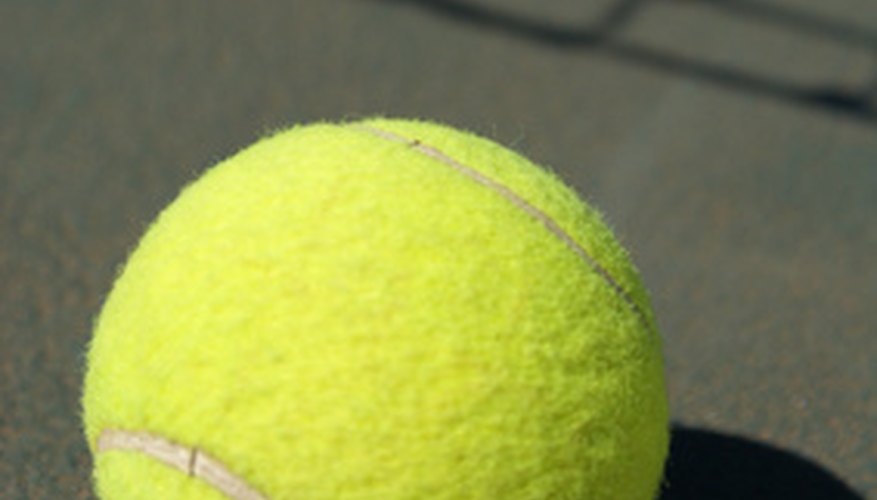Short tennis, which is also known as short-court tennis and mini tennis, is often played by people who are learning to play regular tennis because it can be slightly less demanding. The rules are similar to those in regular tennis, with a few notable exceptions. Short tennis is played on a regulation tennis court with normal tennis rackets and either tennis balls or PTR Speedballs, which are larger and don't move as quickly.
Court

Short tennis uses only the service boxes of a tennis court, not the entire court. The service boxes are the two side-by-side rectangles that touch the net on each side of the court. The back lines of these boxes are the out-of-bounds lines instead of the baselines that serve as out-of-bounds lines in regular tennis.
Serving
A server stands behind the back line of the service box and serves underhanded diagonally across the net. A server makes four serves. He alternates between the right and left service courts, starting with the right court. His opponent then serves in the same fashion. A server gets two attempts. If he fails, he loses a point. If he succeeds, a rally begins.
- A server stands behind the back line of the service box and serves underhanded diagonally across the net.
- If he fails, he loses a point.
Rallies
A player loses a point during a rally if she hits the ball out of bounds or fails to return it. The ball must strike the ground once-no volleys are allowed. If a ball bounces twice at any point, it is a dead ball and the player who last returned it successfully wins the point.
Games and Scoring
Short tennis does not use the 15-30-40-game count of regular tennis. Instead, it simply awards single points. Games continue until one player scores 17 points, with at least a two-point lead. If the game is tied at 16-16 or more, play continues until one player gains a two-point advantage. There is no tiebreaker in short tennis matches, meaning that there is not a unique extra game as there is in regular tennis.
- Short tennis does not use the 15-30-40-game count of regular tennis.
- If the game is tied at 16-16 or more, play continues until one player gains a two-point advantage.
